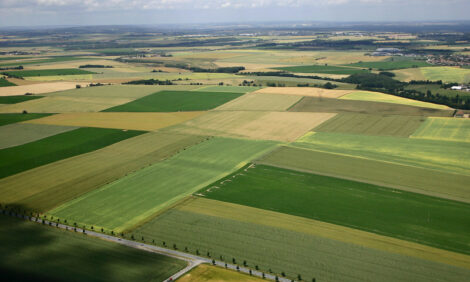



Optimize Heifer Calf Growth With Quality Starters
US - Dairy producers fine-tuning their calves’ rations need to keep high-quality starters in the mix to get optimal growth. That’s according to South Dakota Cooperative Extension Dairy Specialist Alvaro Garcia, who said a recent issue of the Journal of Dairy Science report evaluated the effects of milk amounts on dairy heifer calves.
“Khan and collaborators published a review that considered the amount of milk fed and its impact on solid feed intake, weaning, and performance,” Mr Garcia said. “This extensive review suggested that limiting milk intake to approximately one gallon per day leaves calves hungry and can compromise their growth, health, welfare, and future milk production.”
Mr Garcia said the authors looked at amounts of milk calves consumed in two situations, when cows raised those animals and when the calves were raised away from their dams.
“When cows raise and feed calves on their own, the calves feed at higher rates, but feeding is usually somewhat restricted by cow-calf interactions,” said Mr Garcia. “During the first weeks of the calf’s life, cows initiate nursing events. Later, the calf takes the initiative, but the cow then limits the number and duration of each nursing episode.”
When calves are raised away from the dam, this cow-controlled intake is not present, and calves drink significantly more milk when producers offer it.
“One consideration, however, is that at higher milk intake rates, solid food intake previous to weaning can be reduced and this results is less rumen development,” Mr Garcia said. “What this review suggests is that the optimal amount of milk to be fed to calves is greater than the usual one gallon per day, but less than what they will drink if offered with no restrictions.”
Mr Garcia said the study shows how important high-quality starters are in this process of establishing the proper calf ration.
“The key component for optimal dairy heifer calf growth is the quality of the starter replacing the dam’s milk, and because of it is so important, this is not an area where one should attempt to save money,” he said. “In fact, using higher-quality starters, even those that cost more, will save money because calves will use that for growth instead of eating ‘saleable’ milk. The rearing system becomes less costly when this method is applied.”
Mr Garcia said that since current saleable milk prices are close to $19 per 100 pounds, and since each pound of dry matter from this milk costs $146 per 100 pounds, the question producers could ask themselves is how many pounds of high-quality calf starter could that money buy.
“Offering more milk than the current ‘one-gallon-per-day’ practice would suggest dairy heifer calves receive more high-quality nutrients from that milk, thus improving immune function and overall performance,” Mr Garcia said. “Weaning programs that encourage greater intake of starter will work when the quality of that feed matches the nutrients that whole milk or milk replacer can offer. But when we look at today’s milk prices, it is important to reassess the cost of liquid and dry feeds in heifer rearing programs.”
TheCattleSite News Desk


